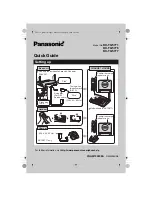
STE User’s Manual
Calls
Rel. 2.6
7-1
CHAPTER 7
CALLS
Procedures for voice operations are divided into 6 major areas:
Paragraph
Paragraph
Paragraph
Paragraph
Paragraph
Paragraph
All operations dealing with 5ESS-8510 switches are addressed in
7-1. GENERAL
MANAGEMENT
Your Office and Tactical STE (Secure Terminal Equipment) supports three modes of calls: Non-secure
Voice (NSV) and Secure Voice (SV) addressed in this chapter and Secure Data (SD), which is addressed
in
. Remote voice operation is only available with the CEU, STE-R, STE-RI and STE-RT as
directed in
Access to these modes depends on how the terminal’s “Initial Secure Mode” setting was established by
the TPA (Terminal Privilege Authority). There are three Initial Secure Modes: Traditional, Auto-Secure,
and Secure-Only.
•
Traditional: When you initiate a call, the STE automatically initiates a non-secure voice call
unless you manually select secure voice or secure data via the Soft Keys. When you receive a
call, the STE attempts to connect in non-secure mode unless the far end (calling) terminal has
initiated a secure call.
•
Auto-Secure: When you initiate a call, the STE automatically initiates a secure voice call unless
you manually select a non-secure voice or secure data via the Soft Keys. Incoming calls will be
connected in the secure mode.
•
Secure-Only: When you initiate a call or receive a call the STE will always connect in secure
voice or secure data. Non-secure calls cannot be made in this mode.
When the STE is connected to an ISDN service, it places “Auto-Secure” and “Secure-Only” mode calls on
a Data Bearer service, if it is available to the far end terminal (called party). The “Traditional” mode calls
are placed on a Voice Bearer service. To use STE signaling, which provides high quality secure voice
and higher data rates, a digital network path from end-to-end is required. Data Bearer service guarantees
a digital network path. Voice Bearer service does not guarantee a digital network path; however, it often
provides a digital network path, especially on local calls. If a call is initiated on a Voice Bearer (traditional
mode), the STE can execute a test with the far end terminal to determine if both the network and far end
terminal will support STE signaling. This can be accomplished by enabling STE on Voice Bearer. This
allows VBSCT (Voice Bearer Secure Capable Test) to be performed. If VBSCT passes, the STE initiates
STE security signaling; if the test fails or it is disabled, the STE utilizes STU-III or SCIP signaling. To
improve the probability of VBSCT success, the STE utilizes only a portion of the B-channel bandwidth
that supports standard STE secure voice (ADPCM). However, it limits the secure data rate to 38.4 kbps
instead of the 64 kbps available on a true Data Bearer service, and 128 kbps on bonded Data Bearers. If
VBSCT fails, or it is not enabled, the resulting STU-III signaling supports CELP voice and data to 9.6 kbps
or SCIP signaling supporting MELP or G.729D.
If your STE is configured PSTN, it will operate in the SCIP (Future Narrow Band Digital Terminal/ Secure
Communications Interoperability Protocol) and STU-III modes. If your STE is configured for TRI-TAC (Tri-
Service Tactical), BDI-530A or BDI-232 (serial Black Digital Interface) it will operate in the STU-III mode
only.
The display samples used in this Chapter are based on the STE’s Initial Secure Mode set to “Traditional”
(default setting), unless otherwise noted.
Summary of Contents for CEU
Page 2: ...Copyright 2006 L 3 Communications Corporation ...
Page 26: ...List of Tables STE User s Manual xiv Rel 2 6 This page intentionally left blank ...
Page 32: ...Introduction STE User s Manual 1 6 Rel 2 6 This page intentionally left blank ...
Page 132: ......
Page 181: ...STE User s Manual Crypto Card Management Rel 2 6 6 25 ...
Page 182: ......
Page 210: ...Calls STE User s Manual 7 28 Rel 2 6 This page intentionally left blank ...
Page 234: ...Remote Control Operations STE User s Manual 8 24 Rel 2 6 This page intentionally left blank ...
Page 258: ...8510 Capabilities STE User s Manual 9 24 Rel 2 6 This page intentionally left blank ...
Page 284: ...User Maintenance STE User s Manual 11 6 Rel 2 6 This page intentionally left blank ...
Page 288: ...Notes STE User s Manual 12 4 Rel 2 6 12 4 CE DECLARATION OF CONFORMITY ...
Page 306: ...Index STE User s Manual Index 18 Rel 2 6 This page intentionally left blank ...
Page 308: ...Rel 2 6 FP 2 FO 2 User Tree ...
Page 311: ......
















































